The foundation of Next-Gen Web Applications is API-Driven Development, which is transforming software development and integration. Application Programming Interfaces (APIs) are essential for developers to prioritize in order to build modular, scalable, and adaptable systems. This method facilitates smooth communication between various software components, encouraging teamwork and enabling the quick development of reliable applications. API-Driven Development ensures a dynamic and effective development process for the next generation of web applications by enabling developers to quickly adjust to changing requirements.

API-Driven Development in Next-Gen Web Applications
API-Driven Development is used in Next-Gen Web App development, which prioritizes smooth data transmission between software components. By enabling developers to work independently on front-end and back-end components, this method improves cooperation, scalability, and flexibility. API integration makes ensuring that functionality updates are implemented quickly, streamlines development, and increases the authority of cross-functional teams. This method creates the foundation for dependable, long-lasting web solutions.
What Exactly is API and API-Driven Development (ADD)?
Application Programming Interfaces, or APIs, act as a link between various software platforms, facilitating easy data sharing and communication. To efficiently monitor, secure, and scale these integrations, many organizations rely on API management software.
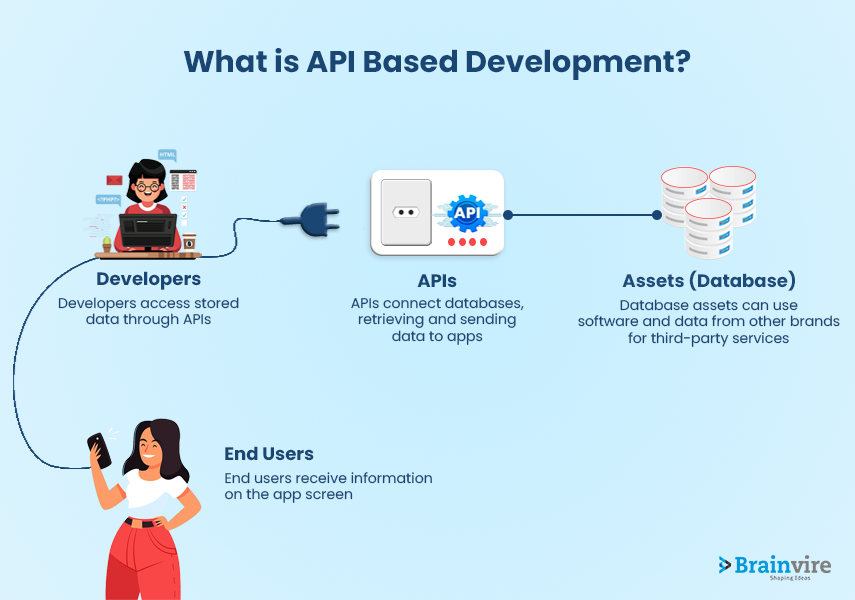
Development Driven by APIs (ADD):
What is API driven development? It is known as “API-Driven Development,” APIs are the focal point of the whole development process. It guarantees a modular and scalable design by placing a higher priority on developing strong, flexible APIs than other components. Because many teams can work simultaneously on distinct project components, ADD encourages collaboration while also promoting efficiency.
Essential Elements of API:
Endpoints, protocols, and tools that enable communication between software components make up APIs. While protocols set the guidelines for communication, endpoints specify particular functionality. Debugging and integration are made easier with the use of tools like testing frameworks and documentation.
Operation of the API
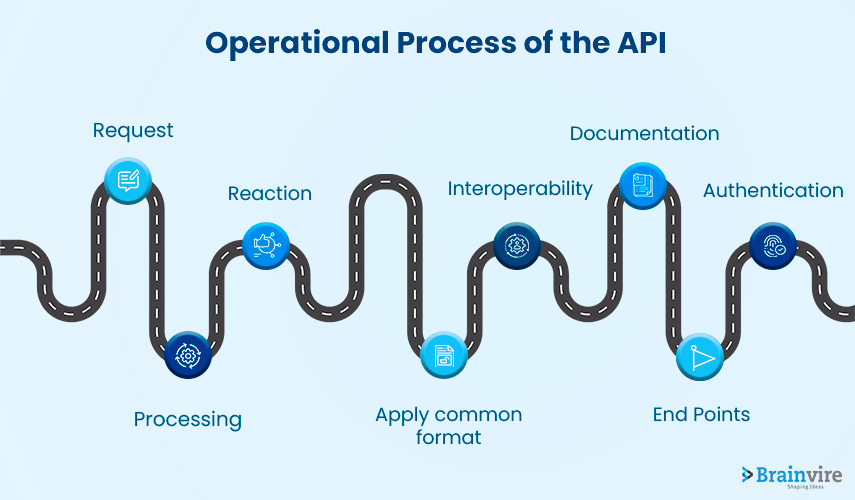
Application Programming Interfaces, or APIs, let various software programs communicate with one another. This is how the API operates:
- Request: A client notifies the API of the desired action in a request.
- Processing: The request is handled by the API through communication with the database or services of the application.
- Reaction: The requested data or the action is finished when the API returns a response.
- Apply common format: For sharing data, APIs frequently employ common formats like XML or JSON.
- Authentication: In order to provide safe access, many APIs require authentication.
- Endpoints: Specific functions of APIs have specific endpoints or URLs.
- Documentation: Proper documentation helps developers get the most out of the API.
- Interoperability: APIs encourage interoperability by facilitating smooth integration across multiple systems.
The New: API-Driven Interface
API-Driven Connectivity is a revolutionary approach that uses application Programming Interfaces (APIs) to integrate software systems, enhance productivity and connectivity, and speed up data exchange across traditional boundaries on apps and platforms.
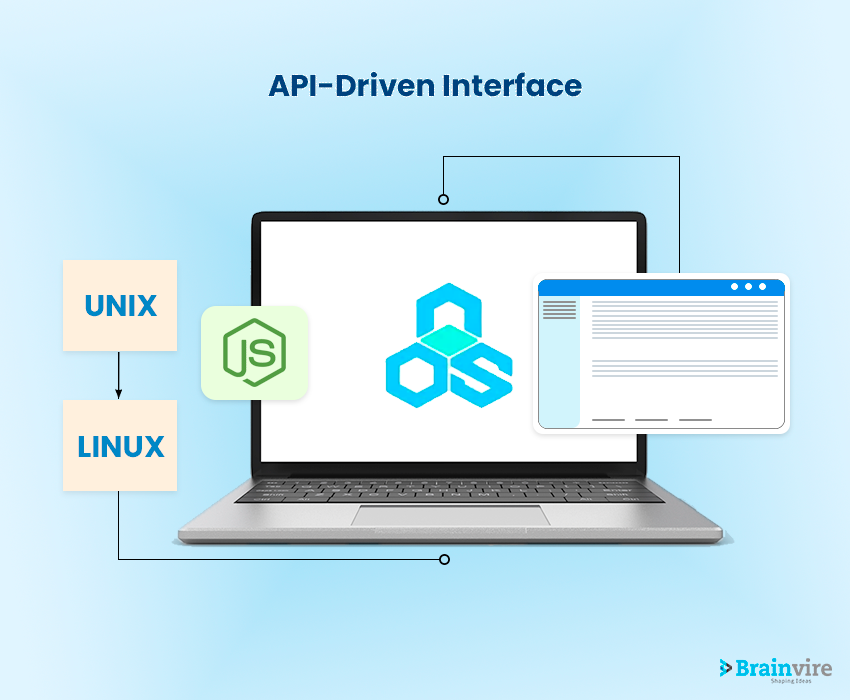
API-Driven Connectivity offers companies the ability to enhance productivity, streamline procedures, and enhance customer service, marking the beginning of a new era of connectedness. This technology revolutionizes communication, collaboration, and creation, ensuring companies stay head in the digital world and maintain flexibility and agility.
Advantages of API-Driven Development
Many benefits, including faster development times, better user experiences, and more application design flexibility, are associated with API-driven web application development, which enables creative, scalable, and effective software development.
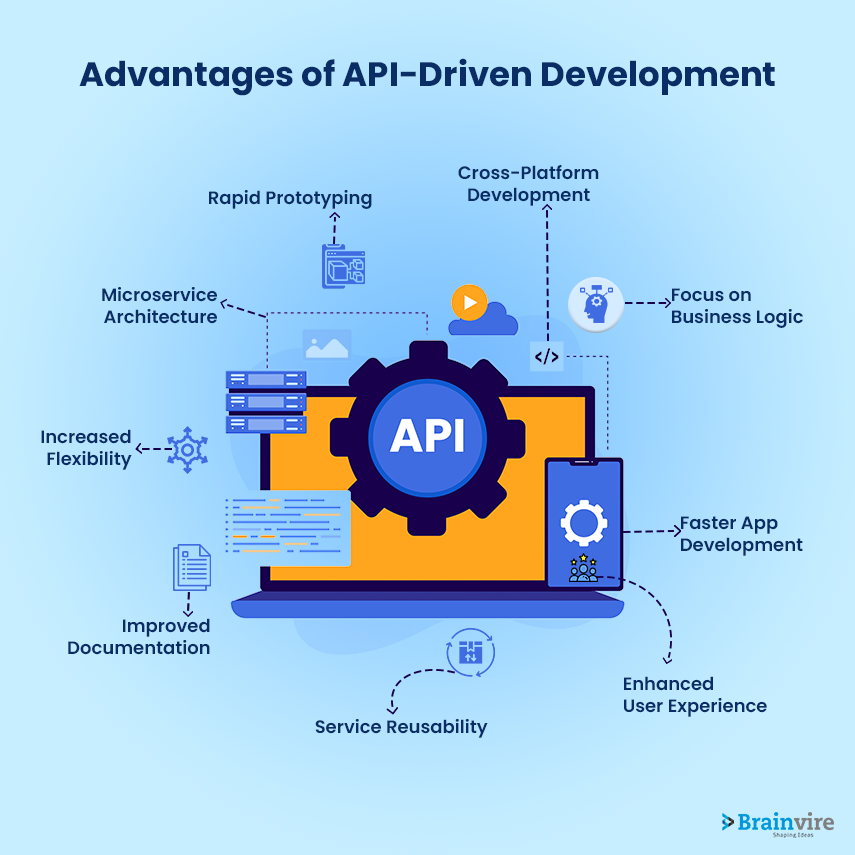
Quick application development:
By enabling developers to leverage pre-built capabilities, API-driven development greatly expedites the application development process. Developers can integrate pre-made components using APIs, which eliminates the need to write a lot of code from scratch. Now applications can reach the market more faster as a result.
Pay Attention to Your Business Logic Alone:
Developers can reduce work by concentrating just on an application’s essential business logic. APIs abstract away complicated features so that developers may focus on developing distinctive and cutting-edge features that set their product apart from competitors.
Improved Documentation:
APIs provide developers with the opportunity to enhance the user experience by accessing valuable data and services from external sources. When features such as social media authentication, real-time data updates, and geolocation services are integrated through APIs, applications become more functional and appealing to users.
Promotes Cross-platform Development:
The use of APIs enables the development of cross-platform applications. By creating an external API that can serve various front-ends, such as website development solutions and mobile applications, developers can ensure a consistent user experience across multiple platforms.
Facilitates Rapid Prototyping:
API-driven development makes rapid prototyping a seamless process, allowing developers to efficiently test and integrate new features. With the added benefit of custom web application API integration, this iterative approach becomes even more effective in perfecting functionality and system design.
Reuse of Services:
Promote the reuse of services, enabling developers to create efficient and reusable code that minimizes redundancy. These services can then be utilized across multiple projects, ultimately saving time and effort in future development programming.
Three Major Functions in the API Life Cycle
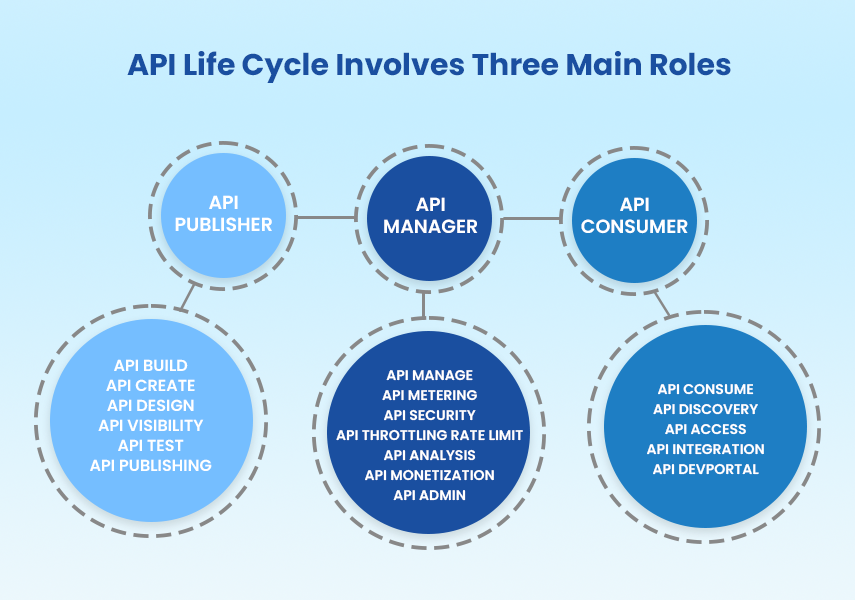
- API Publisher: The API Publisher is responsible for kickstarting the API life cycle through designing and specifying endpoints, as well as ensuring seamless deployment. They play a crucial role in determining the fundamental architecture and features of the API, establishing its functionality, and ensuring a flawless deployment process.
- The API Manager: The API Manager monitors the API and monetizes it after it goes livee, overseeing security protocols, performance, and updates. They seek ways to keep the API permanent and valuable by implementing monetization methods like usage-based fees or subscription models.
- API Customer: The API consumer completes the critical lifestyle of integrating with accessible APIs, assess compatibility, them affect their programs or applications, and promote API usage to achieve desired results in multiple areas.
Tools for API Development
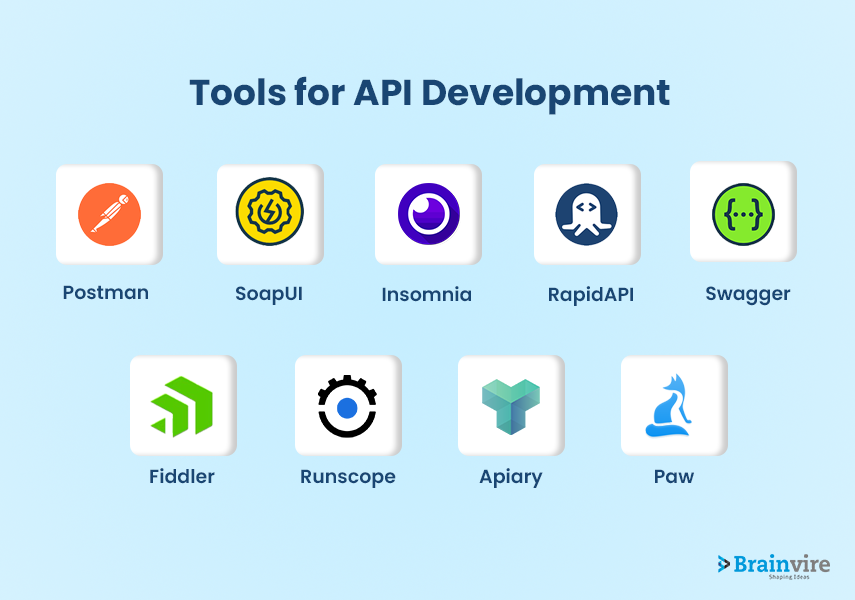
In order to provide smooth communication between software applications, API driven development is an essential component of contemporary software engineering. Several tools have been created to speed up the process of creating APIs; based on their features and functionalities, this post will examine some of the most well-liked tools for API creation.
Testing Tools for APIs
- Postman: Postman is a feature-rich API testing tool with an easy-to-use interface. It facilitates teamwork, automated testing, and the production of thorough API documentation. Developers value its easy-to-use API management and monitoring features.
- Swagger: The framework for developing APIs is provided by Swagger, which is currently called OpenAPI. It makes it possible for developers to efficiently define, record, and test APIs. Developers and users can interact with the API more easily thanks to Swagger’s interactive documentation.
- Insomnia: An open-source tool for testing APIs, Insomnia emphasizes usability and simplicity. Its capabilities, which include strong request/response validation and support for dynamic variables, make it an invaluable tool for developers working on API driven development PHP and testing.
Tools for API Design
- Paw: Paw is a potent macOS application for designing and testing APIs. It offers a visually appealing API design interface and enables many authentication methods. Paw’s usefulness is improved by its ability to generate client code in many programming languages.
- Restlet: The scalability and simplicity of the Restlet API design platform are prioritized. With its visual designer for API design, it facilitates the easy building of RESTful APIs. Documentation and testing features are also included in Restlet.
- SoapUI: Though SoapUI was first used for SOAP web service testing, it has since developed to handle RESTful APIs as well. It provides an extensive range of API testing tools, such as security and load testing features.
Tools for Monitoring and Managing APIs
- RapidAPI: Thousands of APIs are accessible through the RapidAPI platform, which streamlines the integration process. It acts as an API marketplace, offering centralized manaement, pesting, viewing and interface.
- Runscope: Runscope is an API testing and analysis tool that helps developers suree their APIs are dependable and performant. APIs are an important tool for preserving its health because it provides capabilities like real-time monitoring, traffic analysis, and automated testing.
- Fiddler: An online debugging proxy called Fiddler makes it easy to explore and manage API connections. also not only an API creation tool, but also provides insightful information about requests and responses that helps developers troubleshoot and improve their APIs.
Tools for API Documentation
- Apiary: An all-encompassing platform for API design, testing, and documentation is called Apiary. It makes it possible for developers to easily collaborate, produce documentation, and design API designs. The interactive documentation provided by Apiary guarantees understanding for both API users and developers.
Best Practices for Developing and Monitoring API Architectures
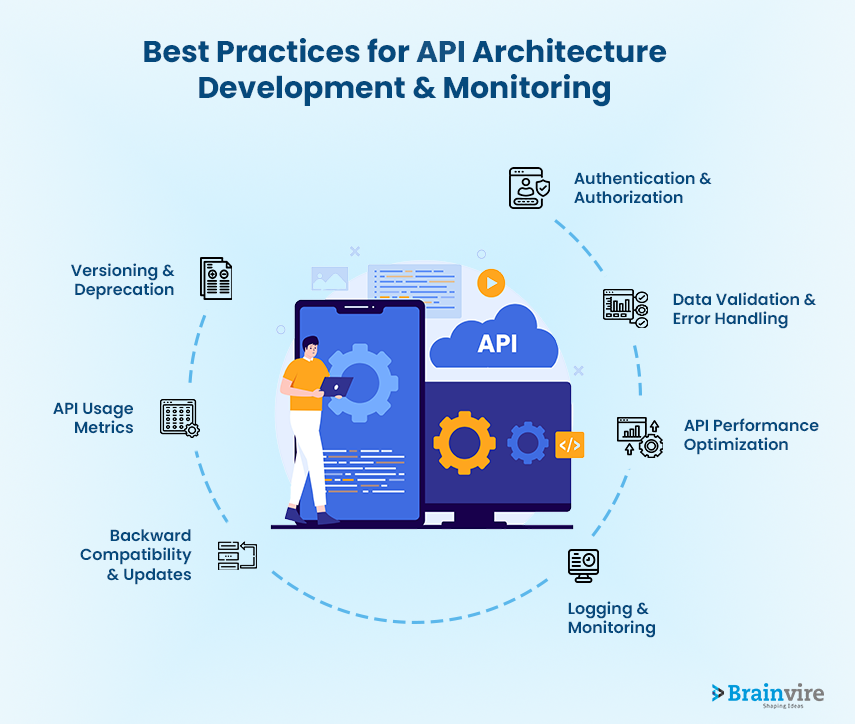
Handling Authorization and Authentication Correctly
An essential part of API security is authorization and authentication. To protect sensitive data, make sure that user authentication systems are strong and that authorization methods are well-implemented. To reduce security threats, use industry-standard techniques like OAuth or API keys and update access credentials frequently.
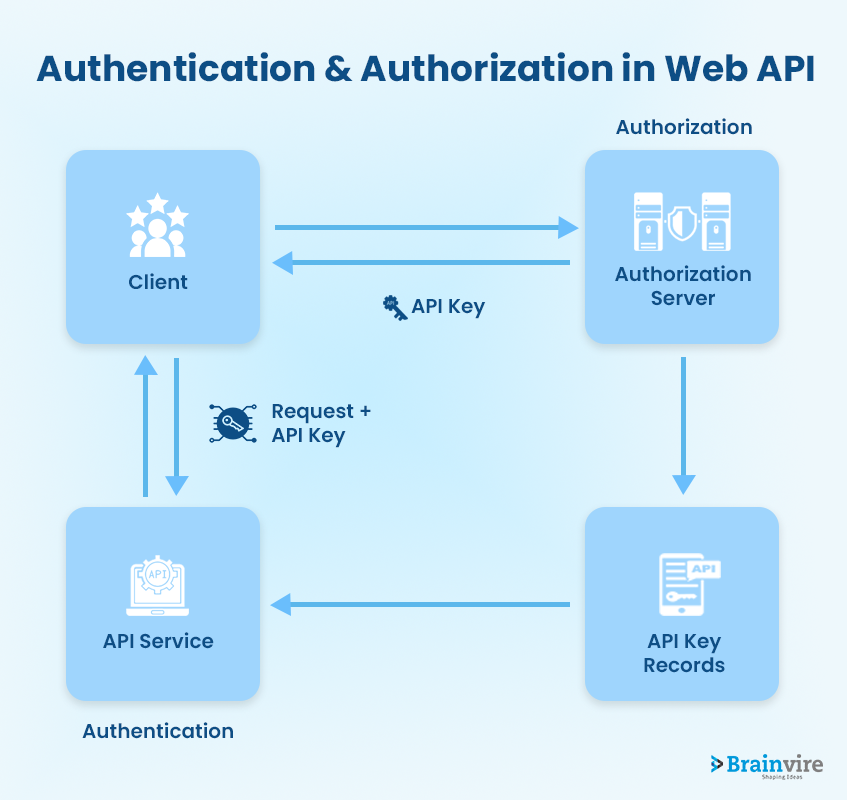
Putting Data Validation and Error Handling Into Practice
By putting in place comprehensive data validation procedures, maintain data integrity. Provide means for handling errors so that, in the event of unexpected inputs or system failures, meaningful replies can be given. This makes your API more dependable and easier to use, which improves user experience.
Enhancing API Efficiency and Caching Mechanisms
Give priority to Headless CMS API integration and prioritize API performance through effective caching strategies and code optimization. Reduction of latency and reaction times will improve the user experience completely. Use caching sparingly to improve scalability and lower server load, particularly for material that is visited frequently.
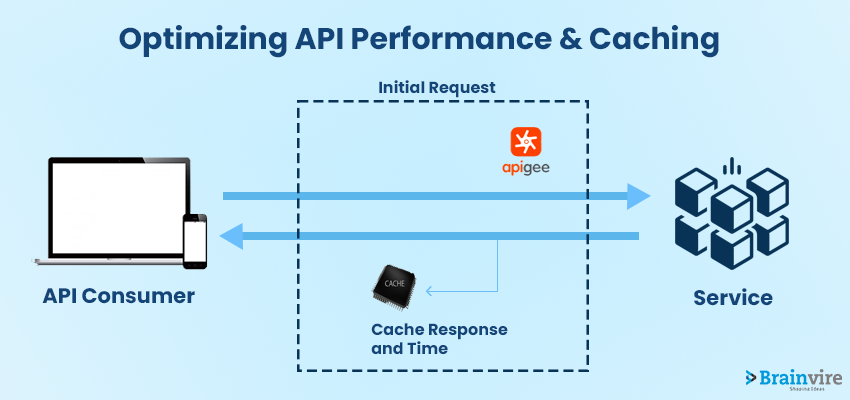
Putting in Place Logging and Monitoring Systems
Make sure that all API activities are thoroughly logged in order to aid in auditing and troubleshooting. Put in place reliable monitoring systems to keep an eye on performance indicators, spot irregularities, and quickly identify possible problems. Proactively addressing issues is made easier with real-time monitoring.
Developing Deprecation & Versioning Plans
Clearly define your versioning strategies in order to prepare for future scalability. Provide backward compatibility and adequately communicate deprecation plans to ensure seamless transitions. This reduces interruptions during updates and promotes a favorable developer experience.
Managing API Updates and Backward Compatibility
Give backwards compatibility and avoid making top priority changes that will cause problems for current users. When adjustments are required, be sure to properly convey the changes and deliver a wealth of documentation. Developers who depend about your API should expet smooth transitions due to a carefully managed upgrade process.
Collecting and evaluating API usage statistics
The API collects and evaluates pertinent metrics to get insights into usage trends. Recognize user behavior using API to help guide future development decisions. Review usage statistics frequently in order to identify patterns, make the the best use of available resources, and match development prioritiements with user requirements.
Develop The Best API For Your Business
- Understanding Your Business Needs: It is important to have a thorough understanding of your business requirements before starting API driven software development. Determine each key features, data transfers, integration and process essencial for optimization. An API that effortlessly achieves your goals only be created with a solid understanding of your business demands.
- Create best practices for the industry: To create efficient APIs, select data types, explore RESTful or GraphQL architectures, use design principles and industry best practices, and set up a validation procedure. Place a heavy emphasis on documentation, scalability, and ease of integration for straightforward API use and integration.
- Security Process: Security ought to be the top priority when creating APIs. Place strong policies, encryption techniques, and authentication systems in place to protect sensitive data. Updated security procedures frequently keep up with evolving threats and vulnerabilities.
- Test and assure quality: For making the API is dependable, it needs to be tested properly. Perform performance evaluations, integration tests, and unit tests to find and stop any problems or bot leaks. Make quality assurance your first priority in order to provide a reliable, seamless user experience.
- Documentation and Support: An essential base of all effective APIs and proper documentation. Provide documentation that is easy to read, concise, current and enable for seamless integration. Create a quick response support system to address user ​​questions and troubleshoot problems.
- Continuous change for improvement: The process of developing an API is iterative. Keep one eye on performance indicators, review user comments often, and keep up with technology developments. Changes and enhancements are used to make your API more efficient and keep up with changing business needs.
The foundation of next-generation online applications is API-driven web app development, which promotes scalability, agility, and seamless integration. For example, with tools like the Depositphotos API Suite, developers can seamlessly integrate an intuitive design editor and access a vast stock content library to enhance their applications. This methodology not only guarantees future-proofing and adaptability but also improves collaboration among heterogeneous systems. API-driven development is becoming a key tactic in the ongoing evolution of the digital ecosystem, helping to push web applications into new frontiers of responsiveness and innovation.
Read more: The WordPress REST API and Its Transformative Role In Modern Content Management
FAQs
Because of its adaptability and capacity to be used in a variety of software projects, API-first development encourages modular architecture and scalability. However, depending on the size, complexity, and particular requirements of the project, its applicability may change.
Grafana, New Relic, and Prometheus are recommended for analytics and monitoring solutions for API-driven development. These tools guarantee robust API functionality by offering usage trends, performance statistics, and detection of any problems.
API-driven programming allows asynchronous data retrieval, which reduces the number of page reloads and improves the responsiveness of the web interface. Through seamless data transmission between client and server and real-time exchange, it encourages engagement and provides dynamic user experiences.
Versioning is essential in API-driven systems to provide backward compatibility. While the API is expanding, keep clear versioning schemes, adopt version control methods in place, and proerly communicate changes to avoid any interruptions from existing users.
By offering defined endpoints, API-driven programming makes the integration of third-party services into web applications easier. Tools that facilitate the process, such as API gateways and OAuth for authentication, guarantee smooth communication with outside services.
GraphQL, Django Rest Framework, and Express.js are common frameworks and tools for API-driven development in next-generation online applications. API creation, maintenance, and consumption are made more efficient by these technologies.
Development approaches that rely on APIs may encounter challenges related to security, compatibility, and thorough documentation. It is essential to handle dependencies and versioning issues and ensure smooth platform interaction. It can be dangerous to try to strike a balance between standardization and flexibility; therefore, it should be done carefully.
Developer support, which offers knowledge, assistance, and debugging, is essential to the accomplishment of development projects powered by APIs. It guarantees smooth integration, swiftly addresses problems, and provides resources to developers, promoting effective development. Support like this improves project stability, speeds up implementation, and eventually helps API-driven development projects succeed as a whole.
Related Articles
-
5 Reasons to Choose nopCommerce For Your Next eCommerce Development Project
Talking About 5 Reasons to Choose nopCommerce For Your Next eCommerce Development Project, In a world where netizens are growing with time, eCommerce has become a business need. To cater
-
Use Modern Tools to Improve Managing Of Food And Beverages Company
Managing an ongoing business way harder than anyone can think. Here, an entrepreneur has to think from all the perspective that can enhance business. And, the hardest thing is taking
-
Creating an Effective High-Value Content Supply Chain to Maximize Impact and Engagement
Maintaining the demand for personalized customer experiences requires a robust and scalable content supply chain (CSC). Organizations struggle to maintain efficiency across planning, creation, delivery, and measurement. Investing in an



